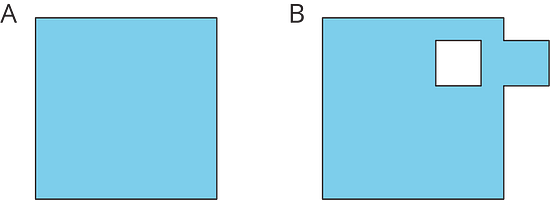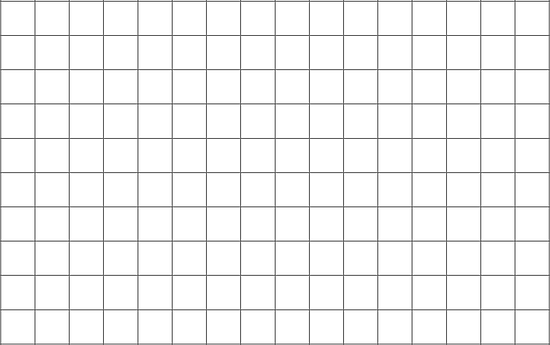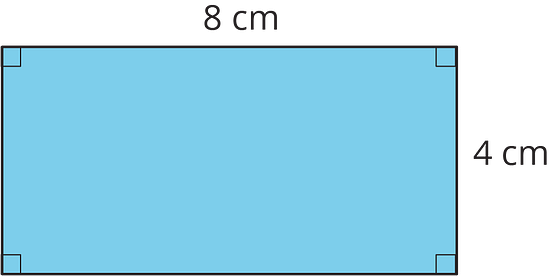Lesson 3Reasoning to Find Area
Let’s decompose and rearrange shapes to find their areas.
Learning Targets:
- I can use different reasoning strategies to find the area of shapes.
3.1 Comparing Regions
Is the area of Figure A greater than, less than, or equal to the area of the shaded region in Figure B? Be prepared to explain your reasoning.

3.2 On the Grid
Each grid square is 1 square unit. Find the area, in square units, of each shaded region without counting every square. Be prepared to explain your reasoning.

Are you ready for more?
Rearrange the triangles from Figure C so they fit inside Figure D. Draw and color a diagram of your work on the grid.

3.3 Off the Grid
Find the area of the shaded region(s) of each figure. Explain or show your reasoning.

Lesson 3 Summary
There are different strategies we can use to find the area of a region. We can:
- Decompose it into shapes whose areas you know how to calculate; find the area of each of those shapes, and then add the areas.

- Decompose it and rearrange the pieces into shapes whose areas you know how to calculate; find the area of each of those shapes, and then add the areas.

- Consider it as a shape with a missing piece; calculate the area of the shape and the missing piece, and then subtract the area of the piece from the area of the shape.

The area of a figure is always measured in square units. When both side lengths of a rectangle are given in centimeters, then the area is given in square centimeters.
The area of this rectangle is 32 square centimeters.

Lesson 3 Practice Problems
Find the area of each shaded region. Show your reasoning.

Find the area of each shaded region. Show or explain your reasoning.

Two plots of land have very different shapes. Noah said that both plots of land have the same area.
Do you agree with Noah? Explain your reasoning.
A homeowner is deciding on the size of tiles to use to fully tile a rectangular wall in her bathroom that is 80 inches by 40 inches. The tiles are squares and come in three side lengths: 8 inches, 4 inches, and 2 inches. State if you agree with each statement about the tiles. Explain your reasoning.
- Regardless of the size she chooses, she will need the same number of tiles.
- Regardless of the size she chooses, the area of the wall that is being tiled is the same.
- She will need two 2-inch tiles to cover the same area as one 4-inch tile.
- She will need four 4-inch tiles to cover the same area as one 8-inch tile.
- If she chooses the 8-inch tiles, she will need a quarter as many tiles as she would with 2-inch tiles.